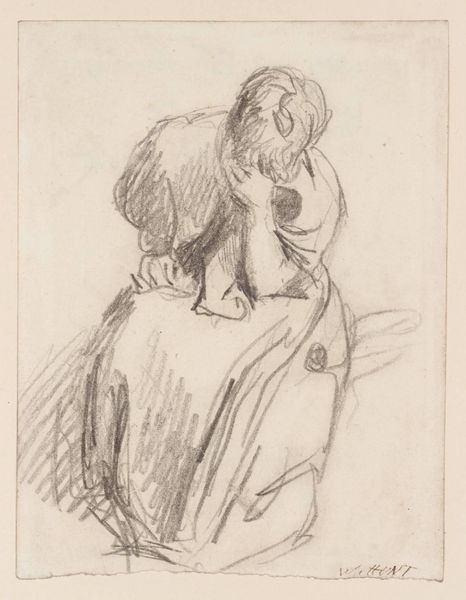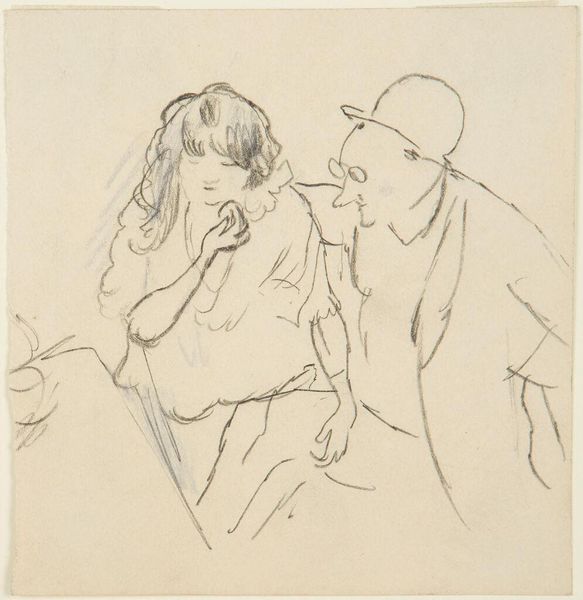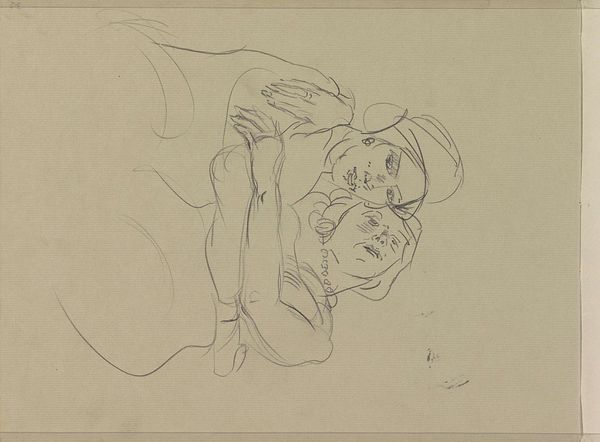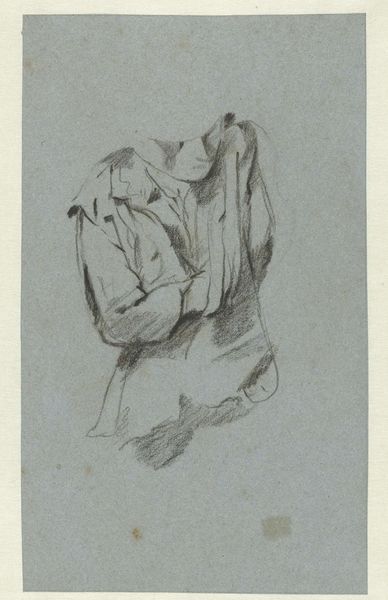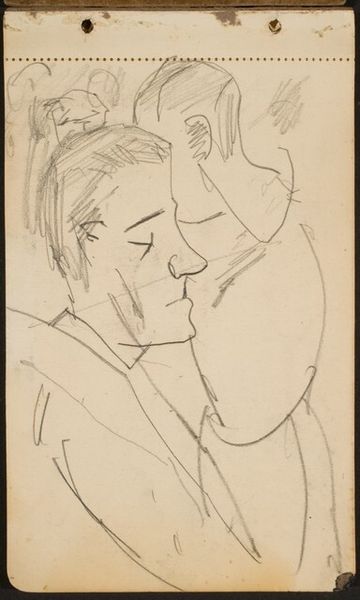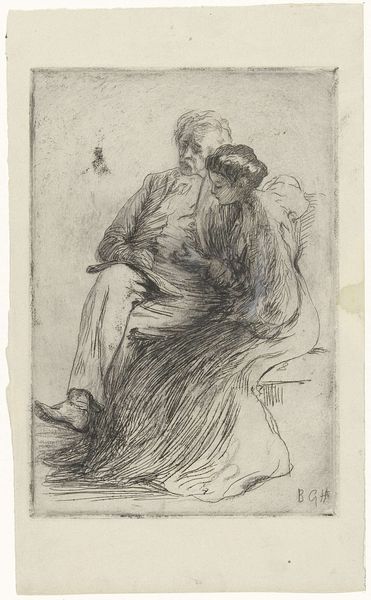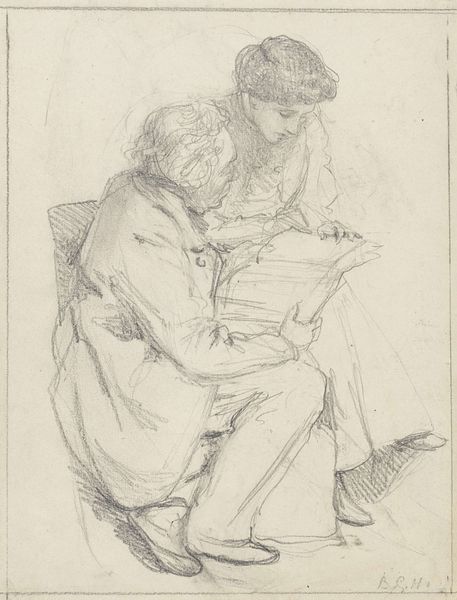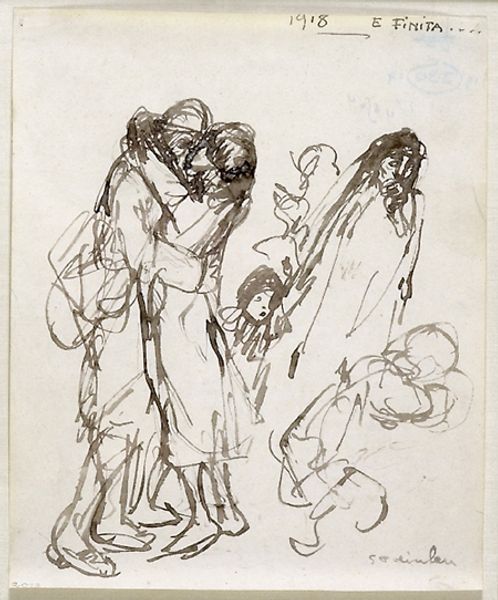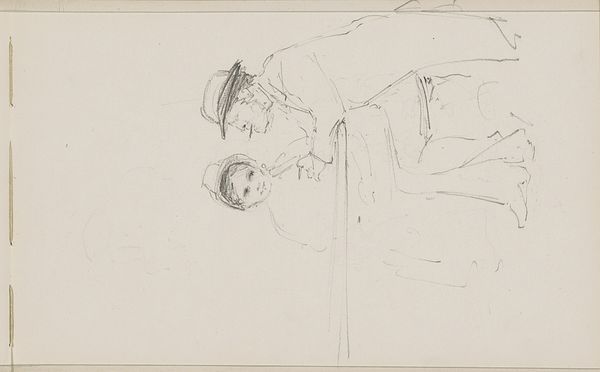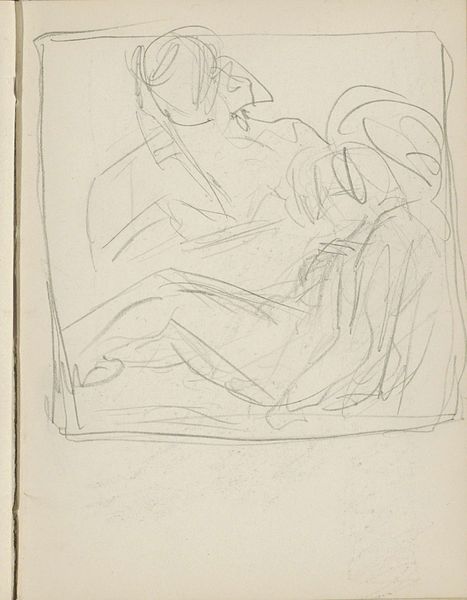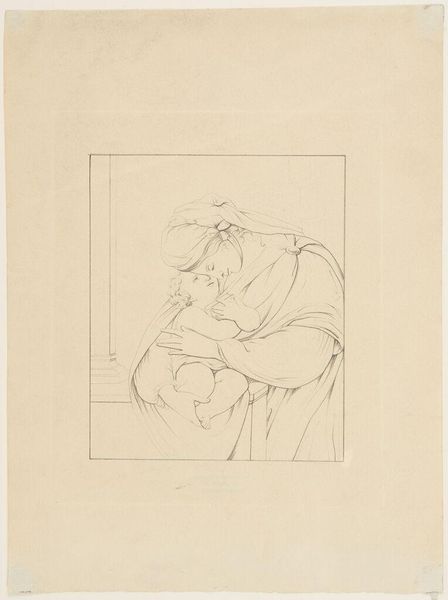
drawing, pencil
#
portrait
#
drawing
#
imaginative character sketch
#
light pencil work
#
cartoon sketch
#
figuration
#
personal sketchbook
#
idea generation sketch
#
ink drawing experimentation
#
pen-ink sketch
#
pencil
#
sketchbook drawing
#
genre-painting
#
storyboard and sketchbook work
#
sketchbook art
Dimensions: height 257 mm, width 204 mm
Copyright: Rijks Museum: Open Domain
Curator: Here we have Carel Adolph Lion Cachet's "Twee handwerkende meisjes," or "Two Crafting Girls," dated sometime between 1874 and 1945. It’s a pencil drawing currently held at the Rijksmuseum. Editor: It strikes me as a quiet scene. The light pencil work lends an air of intimacy. It feels like we are peeking into a private moment. What do you make of their posture? Curator: Their downward gaze, absorbed in their work, is particularly interesting. During the late 19th and early 20th centuries, the portrayal of women engaged in domestic tasks became a popular theme, often laden with ideological weight about their roles in society and family life. The image resonates with the then-rising industrial capitalism as domestic work in a period of crisis was romanticized. Editor: Precisely, the act of handwork itself, depicted here, carries considerable symbolic weight. It’s more than just labor; it speaks to tradition, skill, and even feminine virtue. What’s interesting is that they seem almost suspended outside of space and time, it seems as though this image would have a timelessness and a placelessness about it. Curator: Indeed. While this work lacks explicit political commentary, it reinforces certain social norms. Representations like these played a role in shaping the public's perceptions and expectations of women's work. Editor: I notice the focus on the hands, carefully engaged with their task. Is that intentional, do you think? The artist renders their figures in quite a shorthand manner but their hands are given a strange importance. Curator: Definitely intentional. Hands have long been symbolic of skill, creation, and connection to the material world. Placing such emphasis invites the viewer to consider not just *what* they're doing but also *how* they are connecting with their craft, adding a layer of respect for these manual skills. Editor: A powerful insight. Looking at it now, I can't help but notice how even a simple sketch like this reveals so much about cultural values and the subtle politics of representation. It's a snapshot into a particular way of viewing women and work. Curator: Exactly, reflecting the power of images to both reflect and reinforce societal structures and their inherent expectations.
Comments
No comments
Be the first to comment and join the conversation on the ultimate creative platform.
